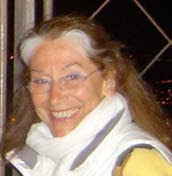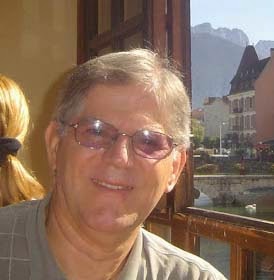by Tom Kando
I recently went on a police ride-along - again. As a professor of criminal justice, I have done many ride-alongs, as well as taught in the state prison system, and I spent innumerable hours doing field-work in juvenile and other correctional facilities. Just so you know that I am not all academic armchair theory.
For the shift to which I was assigned, it began with roll call in early afternoon at police headquarters. There were about two dozen officers, including three or four women and a few “non-Caucasians.”
First, a supervisor ( a woman) held a briefing about the currently active cases, recent arrests and what to be on alert for. Several mug shots were shown on a projector, so all the officers fanning out across the city knew whom they should be looking out for. Cases were labeled with names like “cougar” and “scuba.”
The supervisor described a group four black suspects who were currently roaming around the city and committing armed robberies. Just a few hours earlier they had robbed a poor woman as she was walking home with her $5,000.00 tax refund.
Then the captain of the watch took over, mentioning several additional fresh and unresolved cases. He described a suspect who, right after being put in the back of a patrol car, started urinating inside the car. The suspect’s father was also at the scene. He tried to intervene on his son’s behalf, he refused to allow a search, so the officers had to obtain a warrant, then the suspect threatened to hurt himself.
This is called a “5150,” which is “involuntary psychiatric hold.”
This was also when hundreds of people were dying from Fantanyl/Norco, the deadly opioid analgesic. Two dozen people died in our city alone. The captain gave an update on this crisis.
My first impression was one of extreme professionalism. The two dozen officers in the briefing room were all well-spoken, upbeat, calm, friendly, smart.
After about half an hour, everyone was ready to go. Some of the patrol cars had two officers, some just one. I was paired up with a spiffy thirty-something blond rookie officer. I’ll call him Sergeant Adam Cassini.
We drove towards downtown, part of which was Cassini’s beat. The radio was on, of course, Sergeant Cassini was in communication with the dispatcher at all times. We heard a variety of conversations between the dispatcher and other patrolling officers, some of them unrelated to us, some in which officer Cassini participated. It is a network, essentially.
We heard that another “211” just went down - a robbery. A white Toyota; same gang of four as before.
We drove by some dark alleys where homeless people often hole up. Cassini stopped to check a broken gate that was supposed to close off an alley between two office buildings. We walked in. There was a whole bunch of used syringes on the ground. For meth. There was no one there at the time, except a large dog tied to a pole. Its master was probably panhandling somewhere. Cassini put on gloves and picked up the syringes. Clearly someone lived here.
Cassini said that he often has to shoo away such transients, because the adjacent business owners file complaints and demand it.
Later, we came by a group of homeless people and stopped. There was another cop car there too, with two officers. The policemen engaged in some banter with the transients. It was all very low-key, very friendly. This is called “community policing,” I suppose.
This was my first ride-along in about ten years, and one thing that struck me was the great increase in technology. Now, every patrol car has a “license plate reader.” It’s amazing: As we drove down any city street, this machine read EVERY single license place that was visible within a certain radius. That meant several dozen cars every 100 yards. It then immediately notified us if there was anything wrong, e.g. the car was stolen, its owner was a criminal on the run, or whatever.
And another thing: These officers’ dexterity and alertness never cease to amaze me: Whether they are parked, cruising slowly, eating doughnuts at Krispy Kreme or in a high-speed chase, these guys can simultaneously type a million words a minute on their dashboard keyboard, talk with the dispatcher and fellow officers, and notice suspicious behavior on the street.
We drove down Jibboom Street, where there are motels and prostitutes. As we drove, we got our first domestic violence call - a “273D.” Interestingly, it’s still called “domestic violence” even if both the victim and her assailant/boyfriend are homeless.
Three cops showed up, in two patrol cars. It is customary to back each other up. The victim was a transient woman. She was a sad, poor, decrepit, weatherbeaten, older woman, now bloodied up and crying. Her attacker had just left. He had been stalking her, she said. He got out of prison recently. He had previously escaped from prison once. She told him that it was over between them, but he didn’t want to take no for an answer. He had slapped her around quite a bit and he threatened her with more violence. We drove around looking for him on adjacent streets and alleys. We couldn’t find him. Sergeant Cassini offered her a form to file a restraining order. Much good that’ll do. All the officers could do, was to file another warrant out for his arrest...The woman agreed to file charges against him if they ever find him.
Next, the dispatcher called us to take care of someone who had just called 911 and was threatening to commit suicide. We hurried there, it was right in front of the capitol building. Meanwhile, a fire truck and another cop car were at the scene. This was another “5150" - a mental case. They decided that the fire truck would drive the individual to the hospital. Apparently, he had just wandered off and not taken his medication.
The other patrol car at the scene had two rookie officers. I chatted with them. One of them had just gotten his B.A. in sociology at the state university. I mentioned that I taught in that very department for many years. He said that he had just completed his last required course - Social Theory. Since we just picked up a mental patient threatening to commit suicide, we chatted about suicide.
Something absolutely amazing happened: The young rookie officer who just got his B.A. rolled off the famous French sociologist Emile Durkheim’s three forms of suicide - altruistic, egoistic and anomic! I was stunned. We chatted some more - about Karl Marx and Max Weber! Don’t ever tell me again that all American cops are bigoted rednecks (this kid was African-American, by the way).
We then drove by a park. The rules state that the park is for kids and that adults should only be there when accompanying children. This is so as to avoid it becoming a haven for transients. Cassini shooed off a couple of homeless people, including one who was masturbating.
A few minutes later, Cassini stopped a car with an expired sticker. The woman at the wheel showed him her checkbook register with evidence that she had paid DMV for the renewal. They chatted some more, it was all extremely friendly, obviously he didn’t cite her. Having to clear up the snafu at DMV will be bad enough.
Then came a very time-consuming call - a heavy collision. No fatality, but the cars were in bad shape. The airbags deployed and one driver had to be hospitalized. Traffic was ensnarled for several hours.
The worst call of the entire day was another domestic violence case - this one even bloodier than the earlier one: Another homeless woman got beat up very badly by her ex boyfriend. He was drunk. He accused her of cheating on him, which she denied. A good Samaritan picked her up from the sidewalk and took her into his apartment. We entered and saw a blood-drenched carpet. Blood was oozing out of her cranium, spilling all over the bathroom floor. Of course the ex was long gone. This was definitely felony assault. The police began a search for a white Crown Victoria with license plate starting with 7M.....
Again, the technology was impressive: We got to scroll through the pictures of ALL the cars within the city that start with those 2 characters. Alas, we didn’t find the relevant white Crown Victoria.
Meanwhile, Cassini and a couple of other officers at the scene discussed another pending case: A suspect was confronting a peace officer by holding up a screwdriver while shouting “Kill me! Shoot!” The other officer wanted to record this as a “245,” which means “assault with a deadly weapon.” Cassini disagreed. He said that this was an attempt at “suicide by cop,” and that this suspect should not be charged with a “245.”
So this was an eventful and extremely informative shift. I learned some additional codes, for example “459" (burglary), “187" (homicide), “502" (DUI), the meaning of “CSI:” Crime Scene Investigation, and much more.
As you can see, my take on this experience is very positive. Nothing here supports the widespread view that many cops are unprofessional and biased. You might ask: Did Cassini and his colleagues behave differently in my presence than they do otherwise? I suppose that’s possible, but I don’t believe that there could be a wholesale ten-hour long concerted “fake performance” by an entire department for the benefit of an obscure ride-along. I believe that the men and women I saw in action are fine, honest, capable, law-abiding professionals doing as good a job as can be reasonably expected under the prevailing circumstances.
In my next post, I will try to reconcile this positive experience with the well-known indictments of the American criminal justice and law enforcement systems.
© Tom Kando 2016
leave comment here
Youtube
Contact Form
Popular Posts
-
By Madeleine Kando Flying is like signing away your rights as a human being. Not only is your life put on hold, but you never know which sid...
-
By Tom Kando Only one thing aggravates me more than the mistakes of the electorate - as exemplified by the Democratic loss in Massachusett...
-
by Madeleine Kando We left Boston early Sunday morning, the day before the 2024 Solar Eclipse. We have friends who live close to the Canadia...
-
Tom Kando Some societies are more successful than others. Today, there are successful societies such as Australia, Canada and Scandinavia,...
Tom's Publications and Essays
Madeleine's Publications and Essays
interesting links
Publish Your Article!
A valid author name is required. We will create live links to url's that you specify in your post. Please be patient, and allow us some time to read and approve your article.We reserve the right to refuse any articles that are not deemed appropriate for this blog.








